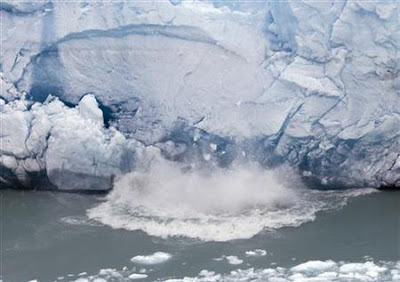The world is close
to reaching tipping points that will make it irreversibly hotter, making
this decade critical in efforts to contain global warming, scientists
warned on Monday.
Scientific estimates differ but the world's
temperature looks set to rise by six degrees Celsius by 2100 if
greenhouse gas emissions are allowed to rise uncontrollably.
As emissions grow, scientists say the world is close to reaching thresholds beyond which the effects on the global climate will be irreversible, such as the melting of polar ice sheets and loss of rainforests.
"This is the critical decade. If we don't get the curves turned around this decade we will cross those lines," said Will Steffen, executive director of the Australian National University's climate change institute, speaking at a conference in London.
Despite this sense of urgency, a new global climate treaty forcing the world's biggest polluters, such as the United States and China, to curb emissions will only be agreed on by 2015 - to enter into force in 2020.
"We are on the cusp of some big changes," said Steffen. "We can ... cap temperature rise at two degrees, or cross the threshold beyond which the system shifts to a much hotter state."
TIPPING POINTS
For ice sheets - huge refrigerators that slow down the warming of the planet - the tipping point has probably already been passed, Steffen said. The West Antarctic ice sheet has shrunk over the last decade and the Greenland ice sheet has lost around 200 cubic km (48 cubic miles) a year since the 1990s.
Most climate estimates agree the Amazon rainforest will get drier as the planet warms. Mass tree deaths caused by drought have raised fears it is on the verge of a tipping point, when it will stop absorbing emissions and add to them instead.
Around 1.6 billion tonnes of carbon were lost in 2005 from the rainforest and 2.2 billion tonnes in 2010, which has undone about 10 years of carbon sink activity, Steffen said.
One of the most worrying and unknown thresholds is the Siberian permafrost, which stores frozen carbon in the soil away from the atmosphere.
"There is about 1,600 billion tonnes of carbon there - about twice the amount in the atmosphere today - and the northern high latitudes are experiencing the most severe temperature change of any part of the planet," he said.
In a worst case scenario, 30 to 63 billion tonnes of carbon a year could be released by 2040, rising to 232 to 380 billion tonnes by 2100. This compares to around 10 billion tonnes of CO2 released by fossil fuel use each year.
Written by Nina Chestney. Read more@reuters.com/article

No comments:
Post a Comment